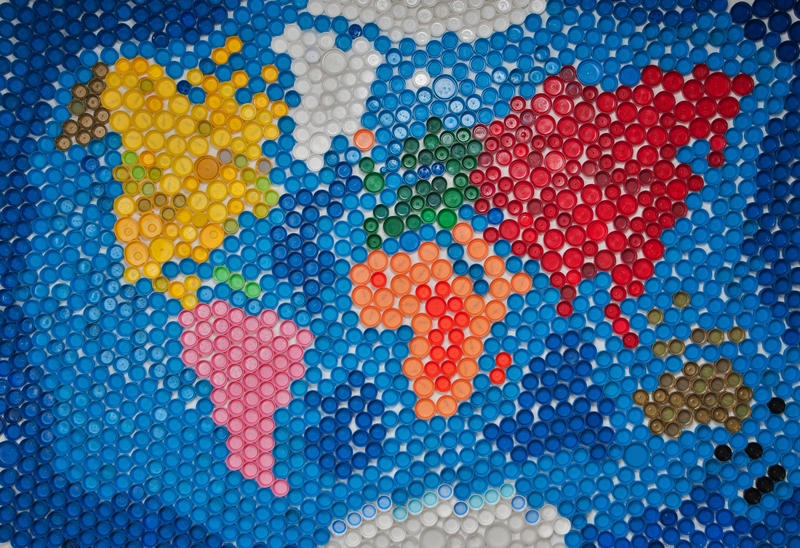Can We Reverse the Tide of Microplastic Pollution?
Microplastic pollution has become a growing concern globally, impacting ecosystems, marine life, and human health. As these tiny plastic particles infiltrate our air, water, and soil, the question arises: can we reverse the tide of microplastic pollution? This article will delve into potential solutions and explore how individual and collective actions can address this pressing environmental issue.
Understanding Microplastic Pollution
Microplastics are plastic particles that measure less than 5mm in diameter. They are primarily formed through the degradation of larger plastic debris but can also enter the environment directly from products like cosmetics and clothing fibers.
- Primary Microplastics: These are directly manufactured for commercial use, such as microbeads in personal care products.
- Secondary Microplastics: These result from the fragmentation of larger plastic waste due to physical, chemical, or biological processes.

The Impact of Microplastics on the Environment
Microplastics pose significant threats to the environment. In marine ecosystems, they are ingested by aquatic organisms, leading to physical harm and toxicological effects. Moreover, microplastics can absorb harmful pollutants, which further amplifies their potential to cause harm when consumed by wildlife.
Impact on Human Health
Although research is still ongoing, scientists warn that microplastics could adversely affect human health. With microplastics being found in drinking water, table salt, and the air we breathe, there are concerns about their potential to cause respiratory, hormonal, and reproductive issues.
Innovative Solutions to Combat Microplastic Pollution
Reversing the tide of microplastic pollution calls for innovative strategies and collaborative efforts. Below are some promising approaches:
Biodegradable Plastics
One potential solution is the development of biodegradable plastics that can break down more easily in natural environments. These materials are designed to minimize the persistence of plastics in ecosystems and help reduce the overall amount of microplastics released.
Improved Waste Management and Recycling Systems
Efficient waste management is critical to preventing plastic debris from entering and degrading in natural habitats. Governments and organizations are working to implement improved recycling systems and waste separation processes to capture and recycle more plastics effectively.
Advanced Filtration Systems
Innovative filtration systems for both domestic and industrial use can help capture microplastics before they enter waterways. Technologies such as washing machine filters and wastewater treatment upgrades play a pivotal role in reducing the amount of microplastics released into the environment.
Policies and Regulations: A Step Towards Mitigation
Enacting and enforcing policies and regulations is essential for reducing microplastic pollution. Many countries are introducing measures to limit the production and sale of single-use plastics, such as bans on plastic bags and microbeads.
Organizations and governments are also collaborating on international agreements aimed at reducing plastic waste and encouraging innovation in sustainable materials. These initiatives facilitate a global response to the challenge of microplastic pollution and create a framework for sustainable practices.
Individual Actions Matter
While systemic changes are crucial, individual actions can also significantly impact microplastic pollution. Here are some steps individuals can take:
- Reduce Plastic Use: Opt for reusable bags, bottles, and containers to minimize single-use plastic consumption.
- Support Sustainable Brands: Choose products from companies committed to sustainability and reducing plastic footprints.
- Participate in Clean-Up Initiatives: Join community clean-ups to help remove plastic waste from local environments.
- Educate and Advocate: Raise awareness about microplastic pollution and advocate for policies that support environmental protection.

The Role of Education and Research
Education and research are powerful tools in the fight against microplastic pollution. Encouraging environmental awareness from a young age fosters a generation mindful of their consumption. Continued research advances our understanding of microplastic effects and enhances our ability to develop new technologies and solutions.
Conclusion: Towards a Plastic-Free Future
Reversing the tide of microplastic pollution is not an easy task. It demands coordinated efforts from governments, industries, and individuals worldwide. By leveraging technology, enforcing regulations, and encouraging sustainable practices, we can mitigate the impact of microplastics and move towards a healthier, safer environment for future generations.
Each step taken towards reducing microplastic pollution lays the foundation for a cleaner, more sustainable world. Together, we can work to reverse the tide and protect the planet from the dangers of plastic pollution.